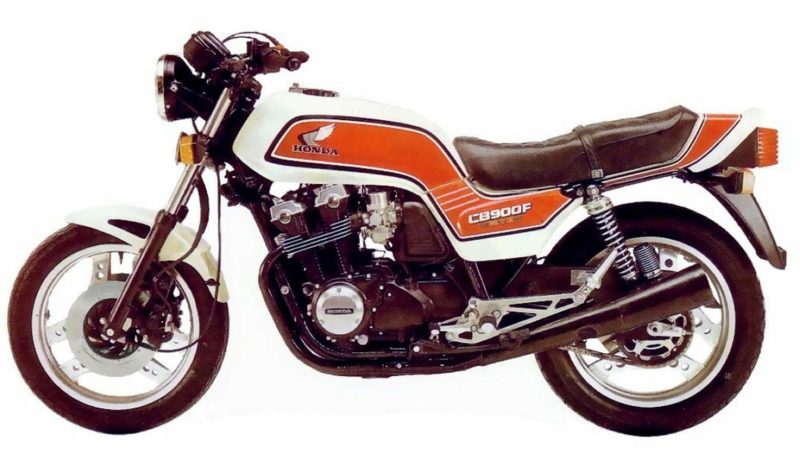Of course, the Honda CB750 Four has rightly become the motorcycle of the (last) century. Those OHC four-cylinder engines were sensational and revolutionary. On the other hand: from the arrival of the Kawasaki DOHC 900 cc, the CB750 was 'overruled'.
The late 'K' models of the Honda CB750 were therefore on the dated / retro
In any case, the successor to the Honda CB750 OHC had to get a camshaft to keep up with the competition. And so we got the Honda CBF750 and 900, the Bol d'Or machines. The press at the time found the 750 version more pleasant. It was only a little less fast than the 900 (902) cc'er, but ran better. Yet in the Netherlands we naturally went for the 900 cc version. This is mindful of the Dutch battle cry 'A Heavy Is Je Ware'. Another cautious comment was in the cosmetics: the lacquer layer was rather thinly in place.
The 900 cc Bol d'Or first delivered 91 and later 95 hp
And that was a serious ability at the time. The 900 was about 200 km/h fast with it. But because there was also sufficient power and torque at lower speeds, the strong 900 could also be toured very civilized and for a long time. And that the four-cylinder with a consumption of 1 in 11 to 1 in 14 were quite thirsty? Oh, nobody cared. The later copies, of the C and D series, were more economical. This made 1 in 17 feasible.
In 1981 there was a family expansion in the form of the CB900 F2
It was equipped with a sporty touring fairing, which, despite its slender cut, offered reasonable protection against the elements. The engine vibrations, which were considerably worse on the 900 than on the 750 cc version, were effectively eliminated that year by suspending the power source in silent blocks.
The CBF900 weighed quite a bit, but had a completely acceptable handling. The suspension is comfortable without being flimsy, and the slightly forward-slung riding position allows for long, fast rides. Even if there is a passenger on board.
CBF900s are here from late 1978
In 1984 there are the last new gray ones imported by Motorhuis Safe. External differences over time are mainly in the wheels. The CBF started with regular Comstar wheels. Later there were the same with 'reversed' spokes and at the end the Hondas had the well-known 'boomerang' wheels. The first CB900s were not optimal. For example, there were quite a few head gasket problems. With the first series of Comstar wheels, the rivets often became loose. But they got better every year. The cam chain was also a real wear part.
Go for the top
Meanwhile, with this series and production time, Honda was already in a world in which older engines were no longer really cherished. Many CBF900's were made. Almost as many have been messed up and/or demolished. Meanwhile, this line of Honda's is classic and there are enthusiasts for it. But those enthusiasts are not even remotely paying the amounts that apply for a beautiful OHC copy. Only hunt for completely original top specimens. The 1982-1983 CBF900 F2 is the most wanted in that area. The teething problems are gone and the cockpit is a nice accessory.
Also read:
- Honda CB750 Four vs Honda CB750 Four
- Honda CB750 revisited
- Also classic: The Honda CB750 K6
- The Honda CB 900 F Bol D'or






Beautiful beautiful motorcycles, but just send them, you had to drag them through the bend
Glad you're paying attention to this again. Honda's first DOHC-16v series production motorcycle, fine machinery and nearly indestructible. I myself had a CB750KZ which model was tested by Motorvisie at the time and yielded more than 90 horses at the rear wheel at TNO in Delft. Head gasket problem 900 was due to the middle 4 studs in the vicinity of the camshaft chain tunnel. These ee-prints and provided with liquid gasket and I think gaskets under the head nuts solved a lot. I think the CBF models came later and these were still 'normal' CB750F and CB900F names respectively. Beautiful memories of!
And in the context of nostalgic enjoyment, they are still the best. And affordable